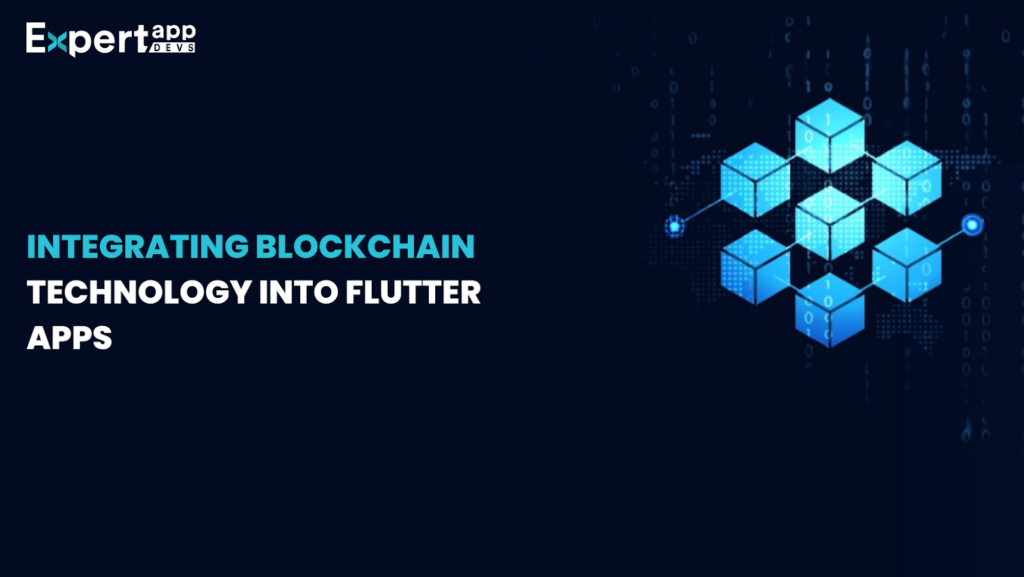Blockchain technology, developed to manage decentralized digital currencies such as Bitcoin, has revolutionized several industries. Blockchain and other distributed or decentralized systems offer data transaction transparency, non-comparability, and data protection.
Data sharing is difficult to manipulate, and since every block contains a reference to the previous block’s hash, time stamp, and transactions, it is almost impossible to alter input to the chain. Blockchain technology is forecast to increase to nearly 1,000 trillion U.S. dollars by 2032.
As for applying blockchain technology in mobile applications, it is possible to consider several opportunities. The benefits of blockchain technology are vast: security, transparency, and opportunities for creating new business models, as well as applications.
For example, smart contracts or distributed applications using blockchain are decentralized, enhancing the end-users confidence and reliability. Blockchain is particularly useful for secure and checkable transactions in banking, health, and supply chains due to their nature of being unalterable.
Flutter, which is Google’s open-source UI toolkit, and blockchain may open up new horizons for mobile app developers. Flutter helps increase efficiency as all natively built mobile, web and desktop applications can be created from a single code. Blockchain in Flutter would be effective and useful to develop appealing and secure strong and creative applications for developers.
Different Use Cases for Blockchain in Apps
#1. Secure Payments
Mobile payments represent one of the most common applications of the blockchain in today’s apps. Traditional payment systems involve the use of third parties, which not only enhance the cost and time of executing the transaction. Blockchain being decentralized eliminates the need for intermediaries thus making the transaction to be cheaper and faster.
Using blockchain features in Flutter applications to make payments secure can increase security. With cryptography, transactions in blockchain systems are safe and the process is transparent.
This is very helpful when it comes to P2P payment, remittance, and microtransaction applications. Payments are done in a secure and efficient manner in flutter applications, enhancing the confidence and pleasure of the users.
#2. Supply Chain Management
Blockchain technology may also change supply chain management. The supply chain has many stakeholders, making transaction management and verification difficult.
Blockchain records all transactions in a visible, unchangeable ledger, making the supply chain traceable and verifiable. According to Statista, the global spending on blockchain solutions is projected to reach 6.6 billion dollars.
Flutter applications that use blockchain for supply chain management may track things in real time. This openness helps discover and fix inefficiencies, reduce fraud, and verify product authenticity. In the food business, blockchain can trace items from farm to table, assuring safety and authenticity.
#3. Tokenization
Tokenization converts asset rights into blockchain-based digital tokens. This applies to real land, art, and intellectual property. With liquidity and fractional ownership, tokenization simplifies asset trading and management.
Flutter app developers may establish digital asset trading and management systems using tokenization. These programs may serve real estate investment platforms, digital art marketplaces, and more. Blockchain makes tokenized asset transactions safe, transparent, and auditable.
Choosing the Right Blockchain Platform for Your App
Flutter app blockchain integration requires the correct blockchain platform. Considerations include scalability, security, and community support. Here are some prominent blockchain systems for various use cases:
#1. Ethereum
Ethereum is a popular blockchain platform with strong smart contract capability. Developers may design Ethereum Virtual Machine (EVM) dApps. Ethereum’s large community and well-documented resources attract developers.
Ethereum is perfect for complicated smart contracts and DeFi apps in Flutter. For high-volume applications, Ethereum’s scalability and transaction costs may be a problem. Additionally, many users look to Ethereum Kopen (buying Ethereum) as a means to invest in the growing ecosystem and participate in decentralized finance (DeFi) opportunities.
#2. Hyperledger Fabric
Hyperledger Fabric is an enterprise-focused permissioned blockchain. It is extremely configurable due to its modular design and pluggable components. ERP and supply chain management applications need high throughput and privacy. Hyperledger Fabric is ideal.
Because Hyperledger Fabric is permissioned, only authorized users may access the blockchain in Flutter applications. This is crucial for corporate applications that need strict privacy and security.
#3. Alternative Platforms
Other blockchain systems should be considered besides Ethereum and Hyperledger Fabric. Binance Smart Chain (BSC) is appropriate for large-transaction applications because to its great performance and cheap transaction fees. Polkadot and Cardano enable blockchain interoperability, which may benefit complicated ecosystems.
Consider your Flutter app’s demands before picking a blockchain platform. Consensus, scalability, security, and community support influence this choice.
Technical Considerations for Integration
Technical considerations are needed to integrate blockchain into Flutter applications. Successful implementation and app performance depend on understanding these characteristics.
#1. Smart Contracts
Smart contracts are self-executing coded agreements that are programmed to execute certain actions when predetermined conditions are met. In some circumstances, agreements on the blockchain automatically execute and perform obligations. Smart contracts are frequently used in the blockchain domain since they enable automatic and trustless execution of transactions.
For Flutter developers, the process is writing and implementing smart contracts on Ethereum. Truffle and Remix are the aid in the development and experimentation of smart contracts. Using APIs or SDKs of a blockchain platform, the app can interface with the functionality of the deployed smart contract.
#2. Wallets
Crypto and digital assets are held and controlled by blockchain wallets. Flutter wallets enable users perform trades, view balances, and manage assets within the app interface.
Flutter developers may use web3dart for adding wallet support in their app for Ethereum or other Blockchain frameworks. The technology behind the wallet must be secure and intuitive to enable a seamless service delivery.
#3. API Interactions
APIs are used by Flutter apps to interact with the blockchain. These APIs enable the app and blockchain to transact, retrieve data and interact with smart contract functionalities as well.
The developers may use APIs such as Infura or Alchemy for Ethereum. These flutter app development services capture the challenges that come with running a full node and offer reliable and elastic access to the Ethereum network . Some other blockchain systems come with APIs and SDKs that you can use to incorporate the network.
Security and Privacy Aspects of Integrating Blockchain in a|Apps
When using blockchain in Flutter applications, security and privacy are key. Blockchain has strong security characteristics, but implementation must follow best practices to assure complete protection.
#1. Encrypting Data
Data transferred and saved in the app must be encrypted. Blockchain offers safe transaction records, but apps should encrypt any extra data. This involves protecting user passwords, transaction data, and other sensitive data.
#2. Users’ Authentication and Authorization
User identification and authorization must be robust. Multi-factor authentication (MFA) may boost app security by restricting access and transactions to approved users. Access to features may be restricted by user roles using role-based access control (RBAC).
#3. Secure Coding Methods
Preventing injection attacks, XSS, and buffer overflows requires safe code. Regular code reviews, static analysis, and security testing may discover and address security risks early in development.
#4. Privacy Issues
Blockchain delivers transparency but must protect user privacy. ZKPs may verify a transaction’s legality without disclosing the underlying data, enabling privacy-preserving transactions. Privacy measures in the app may secure user data while retaining blockchain openness.
Case studies: Examples of Apps Successfully Using Blockchain Technology
Blockchain technology has been implemented into many mobile apps, proving its potential.
#1. Brave Browser
Brave Browser uses blockchain technology to improve privacy and incentivize ad watching. Brave employs Basic Attention Tokens (BAT) to establish a decentralized advertising economy on Ethereum. By seeing privacy-respecting adverts, users may earn BAT tokens to support content producers.
Brave’s usage of blockchain technology shows how decentralized solutions may disrupt company structures and give individuals greater control over their data and online experiences.
#2. IBM Food Trust
IBM Food Trust manages food supply chains using blockchain. A transparent and traceable supply chain using Hyperledger Fabric improves food safety and reduces fraud. IBM Food Trust uses blockchain to track food goods from farm to table in real time.
The technology has been embraced by multiple big food corporations, proving blockchain’s supply chain transparency and trust.
#3. CryptoKitties
CryptoKitties is an Ethereum-based game. Each blockchain token represents a virtual cat that users may collect, breed, and sell. CryptoKitties popularized NFTs and illustrated blockchain’s potential in gaming and digital collectibles.
Blockchain may offer new digital ownership and novel game experiences, as seen by CryptoKitties.
Resources for Learning More
Many websites may help Flutter app developers incorporate blockchain technology.
#1. Blockchain Documentation
Ethereum, Hyperledger Fabric, and Binance Smart Chain have rich documentation. These materials include setting up the development environment, implementing smart contracts, and using the blockchain.
- Ethereum Docs
- Documenting Hyperledger Fabric
- Documenting Binance Smart Chain
#2. Tutorials on Development
Many online tutorials may assist developers learn blockchain. Medium, Dev.to, and GitHub provide several articles and code examples for creating blockchain apps.
- Building Your First DApp
- Hyperledger Fabric Samples
- Flutter/Blockchain Integration Tutorials
#3. Communities
Joining developer communities may provide help and insights. Online forums, social media groups, and chat platforms like Discord and Telegram have lively blockchain and Flutter communities where developers can ask questions, exchange information, and cooperate.
- Ethereum-Stack Exchange
- Hyperledger Fabric Community
- Reddit Flutter Community
Conclusion
By integrating blockchain technology, developers may build unique, safe, and transparent Flutter apps. Blockchain has great promise for tokenization, secure payments, and supply chain management. Successful integration requires choosing the correct blockchain platform, understanding technical concerns, and following security best practices when you hire flutter developers.
Developers may use documentation, tutorials, and developer communities to integrate blockchain and create their dream applications. Blockchain technology and mobile app development will open new doors and spur digital innovation.


